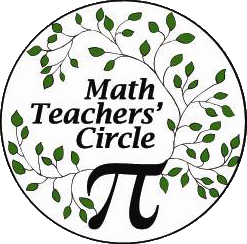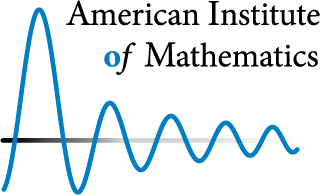
Tic-Tac-Toe 2.0
New Takes on an Old Classic
Catherine Pullin Lane and Lynne M. Pachnowski
Like the MTCircular? Subscribe to our free semi-annual magazine.
The game of Tic-Tac-Toe or, as the British call it, Noughts and Crosses, has roots going back centuries. Grid-style game boards have been found in Ancient Egypt, during the Roman Empire, and in our current age on placemats at many restaurants, throwing a lifeline to parents trying to keep wiggly children entertained.
Those who have played Tic-Tac-Toe enough times may have discovered that if the player who makes the first move is strategic, that player will always either win or the game will end in a tie (also known as a “cat’s game”). Once the players know this strategy, they may lose interest. After all, it is not much fun to play if you know you cannot win! However, our Math Teachers’ Circle came across a related game called “Gobblet Gobblers” that puts the challenge back into Tic-Tac-Toe and engaged us for hours.
Warming Up with Tic-Tac-Toe
In true inquiry-based fashion, the session begins with an engaging situation. The teachers play a game or two of Tic-Tac-Toe with a partner and then are asked, “What do you notice? What do you wonder?” Their discussion typically begins with comments such as, “I noticed that the player who begins is typically the one who wins,” or “I wonder if there is a way to be the second player and guarantee a win.”
 The second stage of every good inquiry-based lesson is to allow the learners to explore. So, in our session, teachers play a few more games while being more reflective about some of their questions. After a few minutes, we ask the teachers to explain their strategies, which is the third stage of an inquiry-based lesson. The discussion that follows often involves the advantages or disadvantages of various approaches. Teachers typically hypothesize that the best first play is either to play at a corner or in the center. In one session, a teacher stated that she prefers to make her first play in the center because there are more opportunities to win. Her argument was that a beginning move to the corner leaves three possible wins, but a beginning move to the center leaves four possible wins. This argument is a natural segue to the group developing a comprehensive description of Player 1’s winning strategy. Computer Science for Fun has a great unplugged computer science activity, the “Intelligent Paper,” which provides a written description of the strategy. The strategy can also be encapsulated in a flow chart or decision tree (as shown here). Another great direction to explore is to identify the number of distinct possible games, including the number of distinct positions of a “cat’s game.” (Spoiler alert: There are only three of the latter!) Also visit Wikipedia’s page on Tic-Tac-Toe for a good overview of these and many other mathematical questions involving the game.
The second stage of every good inquiry-based lesson is to allow the learners to explore. So, in our session, teachers play a few more games while being more reflective about some of their questions. After a few minutes, we ask the teachers to explain their strategies, which is the third stage of an inquiry-based lesson. The discussion that follows often involves the advantages or disadvantages of various approaches. Teachers typically hypothesize that the best first play is either to play at a corner or in the center. In one session, a teacher stated that she prefers to make her first play in the center because there are more opportunities to win. Her argument was that a beginning move to the corner leaves three possible wins, but a beginning move to the center leaves four possible wins. This argument is a natural segue to the group developing a comprehensive description of Player 1’s winning strategy. Computer Science for Fun has a great unplugged computer science activity, the “Intelligent Paper,” which provides a written description of the strategy. The strategy can also be encapsulated in a flow chart or decision tree (as shown here). Another great direction to explore is to identify the number of distinct possible games, including the number of distinct positions of a “cat’s game.” (Spoiler alert: There are only three of the latter!) Also visit Wikipedia’s page on Tic-Tac-Toe for a good overview of these and many other mathematical questions involving the game.
All of these discussions about Tic-Tac-Toe illustrate that it is a problem with “multiple entry points.” Whatever grade level we teach, and regardless of our particular math content background, we can build on a common experience with Tic-Tac-Toe and investigate questions about strategies.
Tic-Tac-Toe With a Twist

Gobblet Gobblers is a variation on Tic-Tac-Toe. The commercial version of the game, produced by Blue Orange, can be purchased inexpensively and has won several prestigious awards. Game box pieces include:
- Four bars that can be arranged into a three-by-three grid
- Six orange “gobblers” (two each in small, medium, and large sizes)
- Six blue “gobblers” (again, two each of small, medium, and large)

The game may be easily modified for a large group by making grids on large sheets of paper and using three different sizes of opaque cups in two colors. Essentially, for the cost of a few packs of cups and some large paper, a roomful of thirty people can play.
To play the game, give Player 1 the six orange gobblers and Player 2 the six blue gobblers. As in Tic-Tac-Toe, the object of the game is to line up three of your pieces. During a turn you may:
- Place any gobbler on the board in an empty space or over a smaller gobbler, or
- Move any gobbler already on the board to an empty space or over a smaller gobbler.
Once you touch a gobbler on the board, you must move it.
The teachers are asked to play and to be ready to describe what they notice and wonder. After playing, we have teachers share their observations, which typically include such questions as, “Is it better to start with the big gobblers or with small ones?” “Should you start in a corner like Tic-Tac-Toe?” “Which is the better defense: to block in an open space, or to ‘gobble’ the opponent?” “Is there a situation in which you should ‘gobble’ your own piece?”
Another natural question is whether there is a winning strategy or strategies in Gobblet Gobblers. Creating a decision tree like the one in our simpler Tic-Tac-Toe game can become very layered, and is a rich and interesting activity promoting investigation.
We have found that playing the game alone takes about 45 minutes, while including more investigative activities easily brings the session to two hours. In our experience, it is beneficial for teachers to play Gobblet Gobblers in groups of four. This facilitates opportunities to discuss plays out loud and observe others play. In order to develop a winning strategy, pairs or groups may need to play collaboratively and not competitively, noting choices and decisions.
After introducing Gobblet Gobblers to the MTC Network, we predict that it will become a perennial hit and one of those classic games available at immersion workshops and other gatherings. Teachers share that they have taken it back to their classrooms at all grade levels, not to mention that it has also made its way to many a kitchen table in our area.
Catherine Pullin Lane (Baldwin Wallace University) and Lynne M. Pachnowski (University of Akron) are leaders of the Rubber City MTC in Akron, Ohio.
This article originally appeared in the Autumn 2019 MTCircular.
TABLE OF CONTENTS
AUTUMN 2019 MTCIRCULAR
 |
Tic-Tac-Toe 2.0New Takes on an Old ClassicCatherine Pullin Lane and Lynne M. Pachnowski |
 |
Circling to ConnectFive Programs Building Math Joy on the Foundation of Math Teachers’ CirclesCircles of Inquiry, Julia Robinson Math Festivals, Math Monday, Math News Snapshots, Journal of Math Circles |
 |
A Better World Through MathGloria Brown Brooks Is Retiring, But She’s Not Slowing DownInterview by Jessa Barniol |
 |
Math Teachers’ Circle Small Grants Awarded |
 |
A Note from AIMSurprising Connections |
 |
Dispatches from the CirclesLocal Updates From Across the Country |

